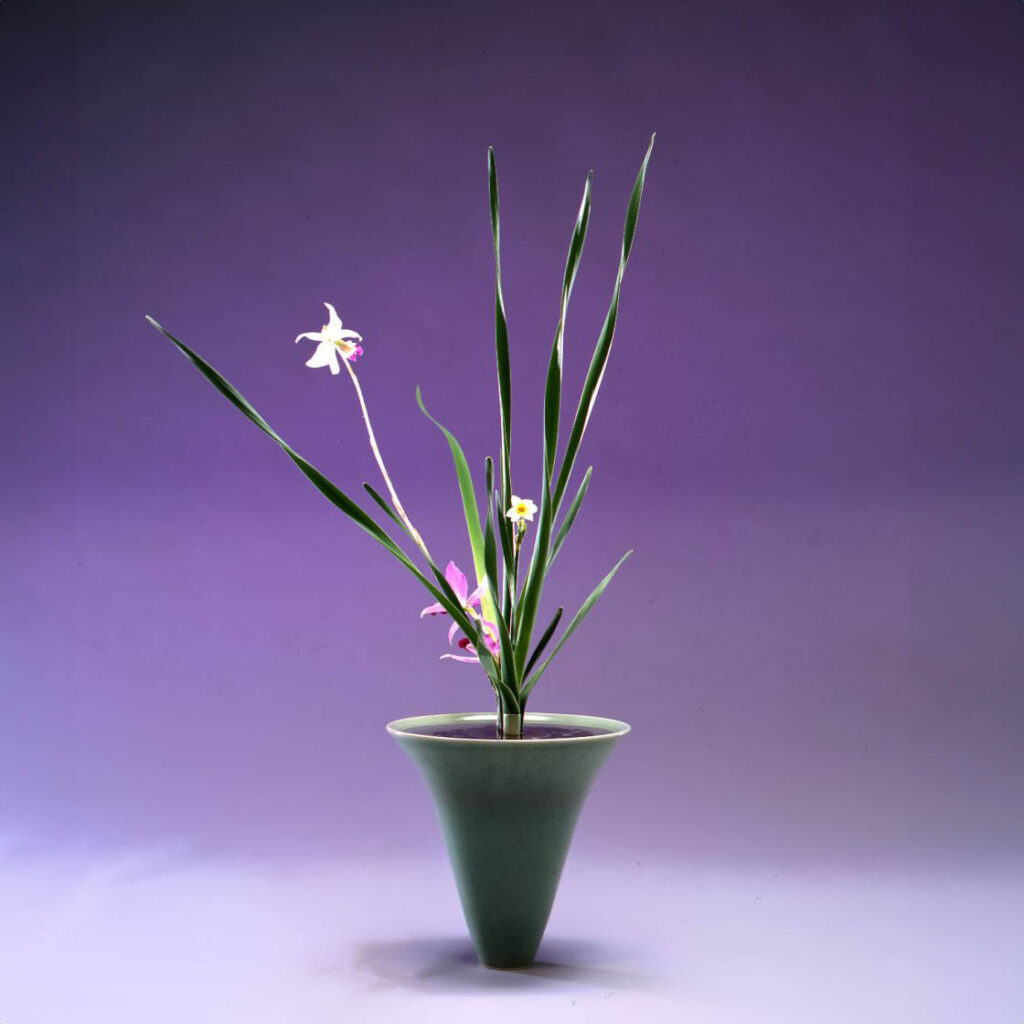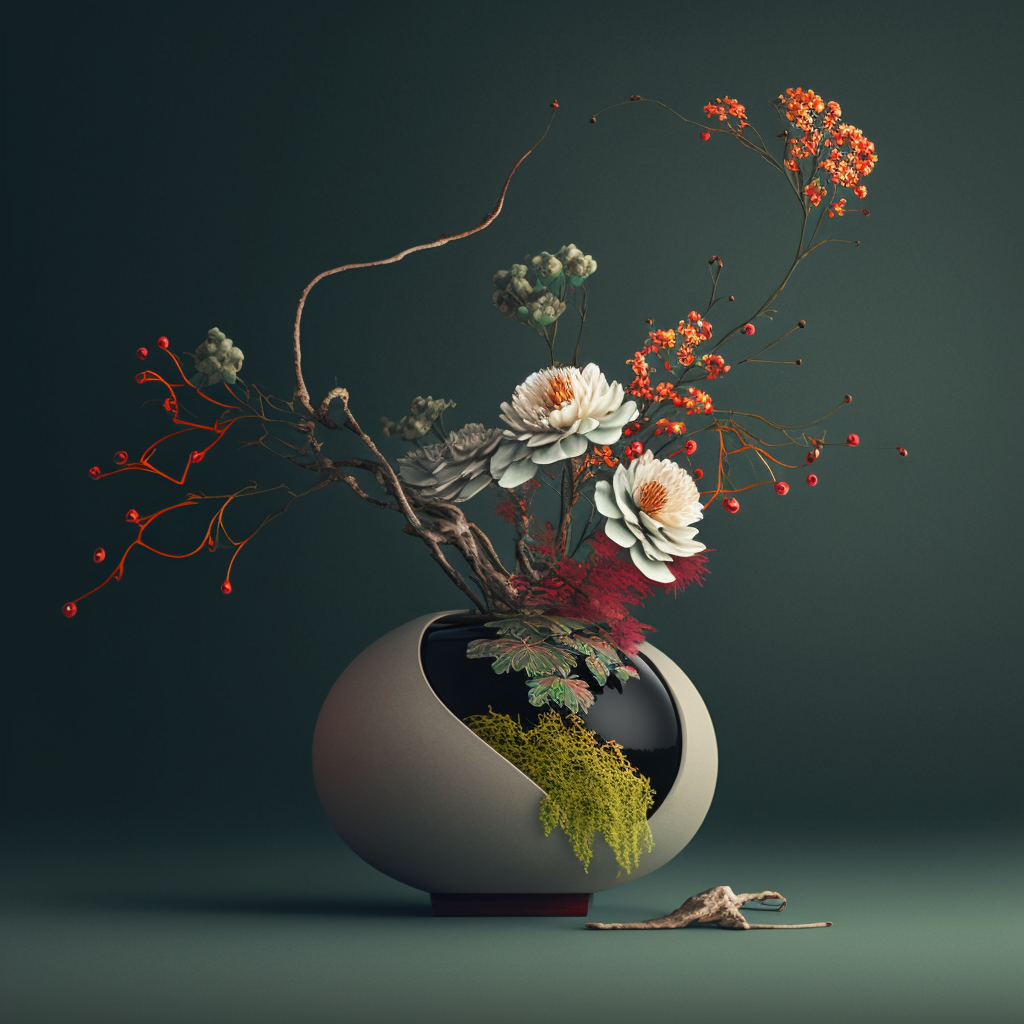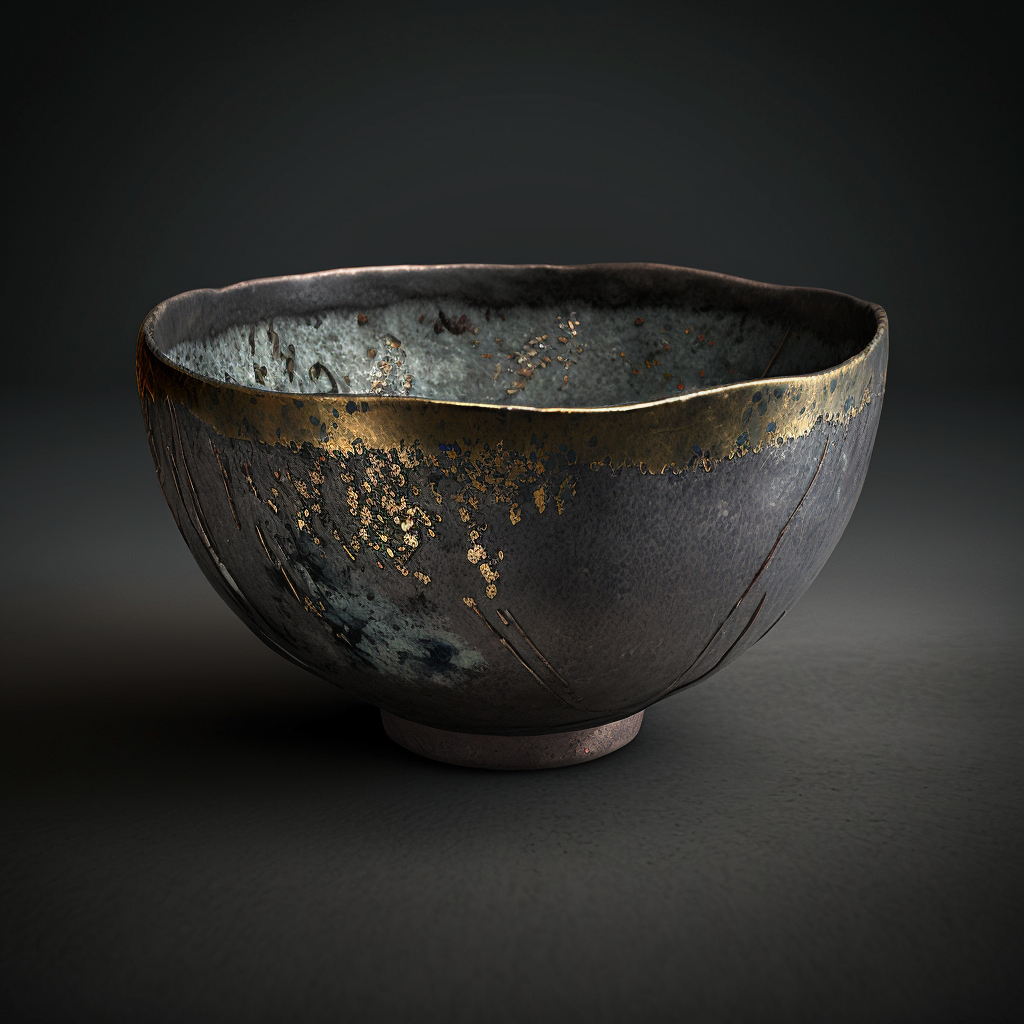The Ikenobo school is one of the oldest and most prestigious schools of Japanese flower arranging, also known as “Ikebana”. Founded over 550 years ago by Senno Ikenobo, this school played a central role in the development and preservation of traditional floral art in Japan.
History of the Ikenobo School:
It was established at the dawn of the Muromachi period, around 1462. It grew significantly under the leadership of the Ikenobo family, who passed down the teachings from generation to generation. Today, it remains an influential institution in the world of ikebana.
Philosophy and Artistic Approach:
Ikebana is not limited to simple flower arrangements. It embodies a profound philosophy which aims to express the harmony between nature, man and the space that surrounds them. Arrangements are carefully designed to reflect natural beauty while capturing the moment.
Unique Styles and Techniques:
The school offers several distinct styles, each characterized by specific aesthetic principles. Among the most notable are the “Rikka” style, which evokes natural landscapes, and the “Shoka” style, emphasizing simplicity and balance.
Transmission of Floral Art:
The tradition of Ikebana is passed down through lessons, workshops and demonstrations. Teachers, called “sensei”, play a crucial role in the training of students, guiding their learning of aesthetic techniques and principles.
Worldwide influence of the Ikebono school:
Although it has its roots in Japan, its influence has spread globally. Ikenobo branches and associations are present in many countries, allowing an international audience to engage in this form of traditional floral art.
Events and Celebrations:
The Ikenobo School regularly holds exhibitions, competitions and special events to promote the appreciation of Ikebana. These opportunities provide artists with a platform to showcase their creations and inspire new talents.
Conclusion:
The Ikenobo school has preserved the essence of Ikebana throughout the centuries, continuing to fuse tradition and innovation. As the keeper of a rich floral history, she remains a source of inspiration for those seeking to explore the ephemeral beauty of Japanese floral art.



